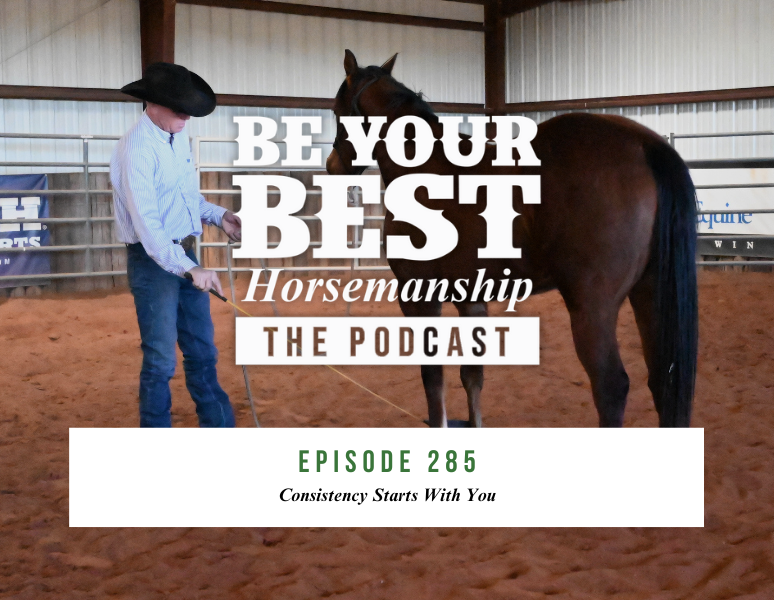Ep 285: Consistency Starts With You
Last week, I was working through a handful of my colts here at our training facility—many of which are coming three-year-olds now. We’ve got a nice group that we started last fall, and each one is maturing at their own pace, both physically and mentally. That’s something I always try to honor—progressing a horse at a rate they can handle, so they continue to build confidence and actually enjoy their job when it’s all said and done.
Some of these horses are already at the point where they’re eager to see me walk up with a halter. Others are still trying to decide if they trust me enough to let me in. And I get it—because without trust, you can’t build true confidence. And without confidence, you’re just hoping things go right instead of knowing you and your horse are prepared for whatever the day brings.
One mare I worked recently had a lot of ability, but she came to me very insecure and lacking a strong foundation. As I visited with her owner—who's a barrel racer and a solid hand—I emphasized something I think we all need to hear from time to time: take the time it takes. Don’t just train until your horse gets something right. Train until they rarely get it wrong. That’s what preparation really looks like.
The truth is, if we had more of that mindset in this industry—fewer shortcuts and more commitment to the process—we’d see a lot fewer frustrated riders and a lot more confident horses.
I also worked a few three-year-old geldings last week that I’ll be taking to the next level before passing them on to their next home. One in particular—Stinger, a gray with a lot of feel and a pedigree similar to a great horse I had named Murphy—got me thinking more about how easily we overlook our own inconsistencies.
Stinger has all the tools—balance, feel, a willingness to stop and stay framed up—but he’s also a horse that’s extremely sensitive to shifts in body position. So sensitive, in fact, that he was changing leads almost too easily, often when I didn’t ask. And if a horse is switching leads without you asking, or switching only in the front or hind, that’s not a horse problem. That’s a rider problem. That’s me being inconsistent with my cues.
That’s when it hit me again, as it often does: if I want consistency from my horse, I have to bring it first. Consistency starts with me.
Everything my horse does is a reflection of how clear I’ve been. If my horse is unsure about which lead to stay in, it’s likely because I’ve been vague with my signal. If he’s anticipating a cue that hasn’t come, maybe I’ve taught him—accidentally—that I’m not all that consistent.
This plays out across disciplines, too. Whether you're competing in the roping or barrel racing or trail riding out on your favorite loop, the foundation we build matters. And horses aren’t confused because they’re trying to be difficult—they’re confused because we haven’t given them a clear, consistent picture of what we want.
I always say this: think about the exact response you’re looking for. Then think about how you can ask in a way your horse understands. And finally, think about where the release is. That’s your responsibility, not theirs.
And when it comes to young horses, the same principle applies. I had a conversation with my daughter this weekend about handling her new foal, and I reminded her that whatever you allow in a weanling is what you’re going to get when that horse weighs 1,200 pounds. Bad habits don’t disappear with time—they grow. And when you decide to correct something at two or three years old that was never addressed early on, that horse is going to be confused, defensive, and likely pretty resentful. That’s not fair to them.
So when I say consistency starts with you, I mean it in every way—from the first time you put a halter on to the moment you ride into the arena. Whether it's a weanling learning to stand tied or a performance horse preparing to make a run, the habits we instill—and the way we reinforce them—will shape that horse’s future.
Our horses are always learning. And we should be too.
So today, as I head out to ride, I’m going to ask myself again: Am I being as consistent as I expect my horse to be? Are my signals clear? Am I setting them up for success?
Because they’ll only be as good as I am. And that means I better bring my best.




